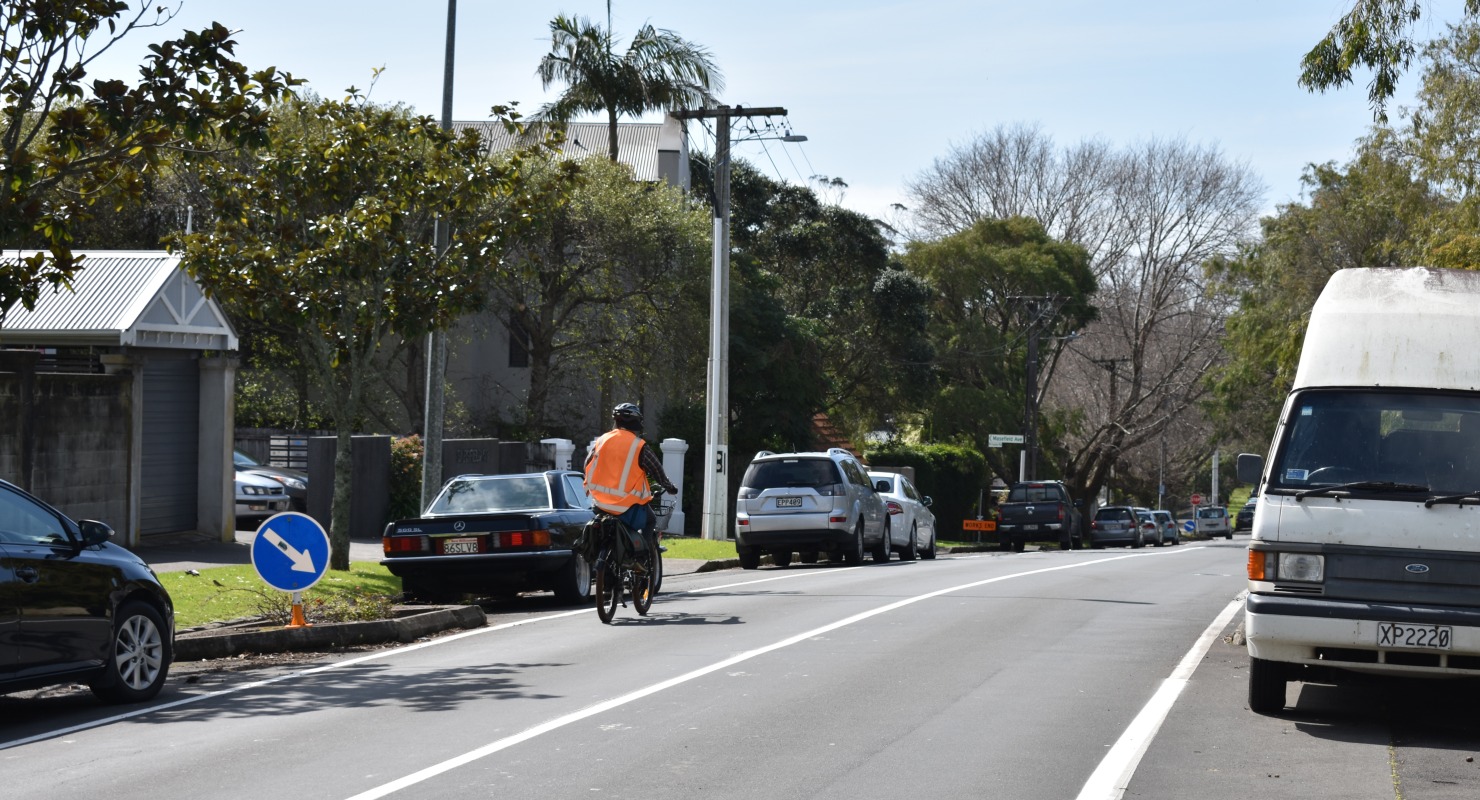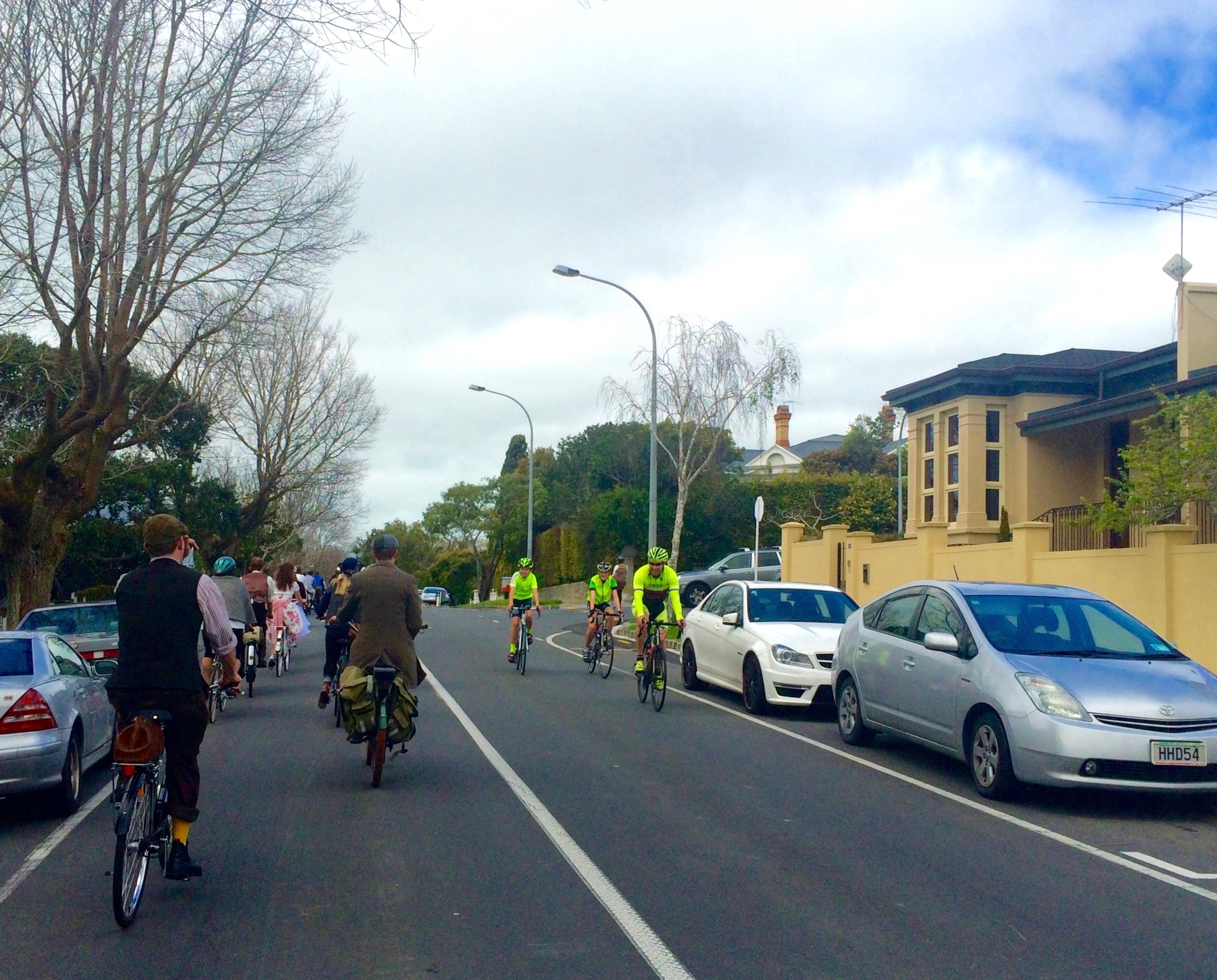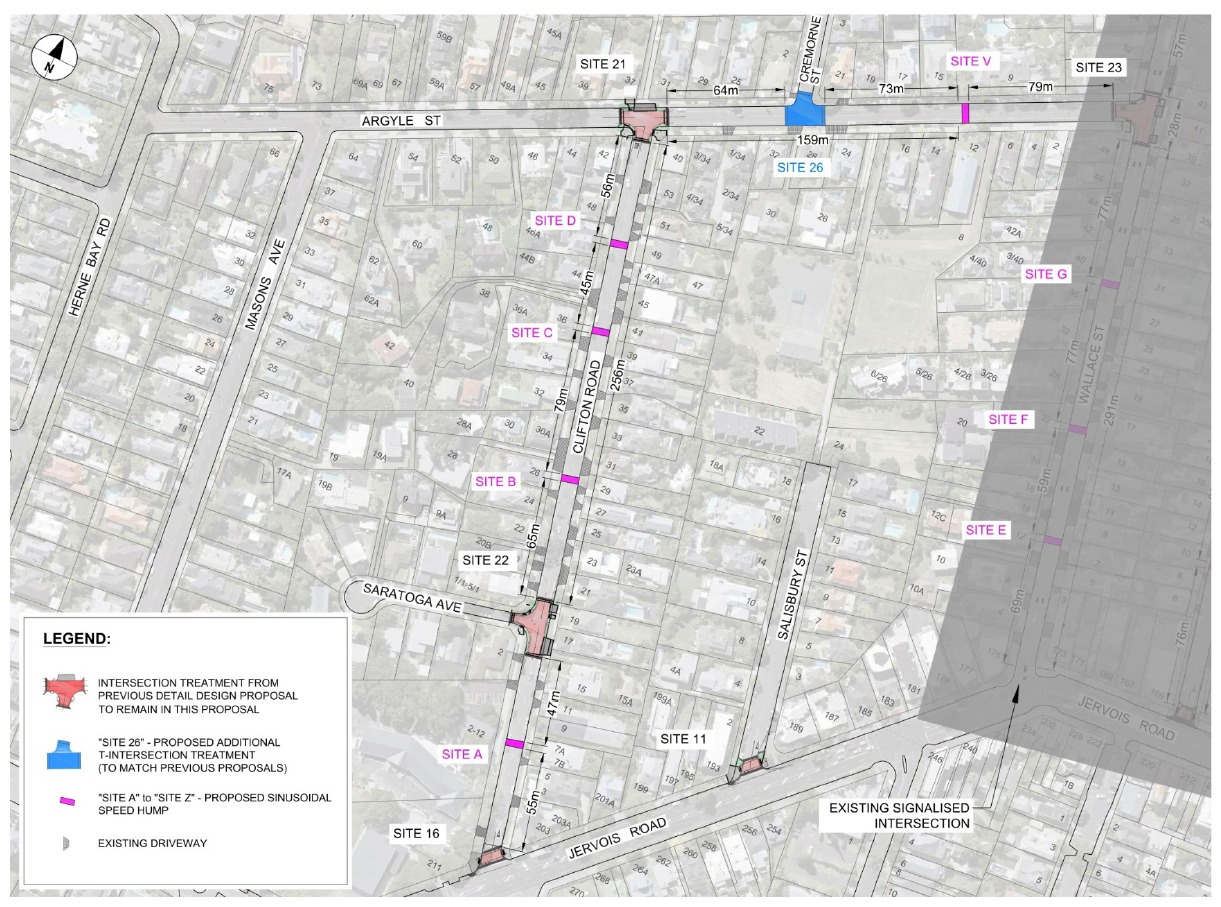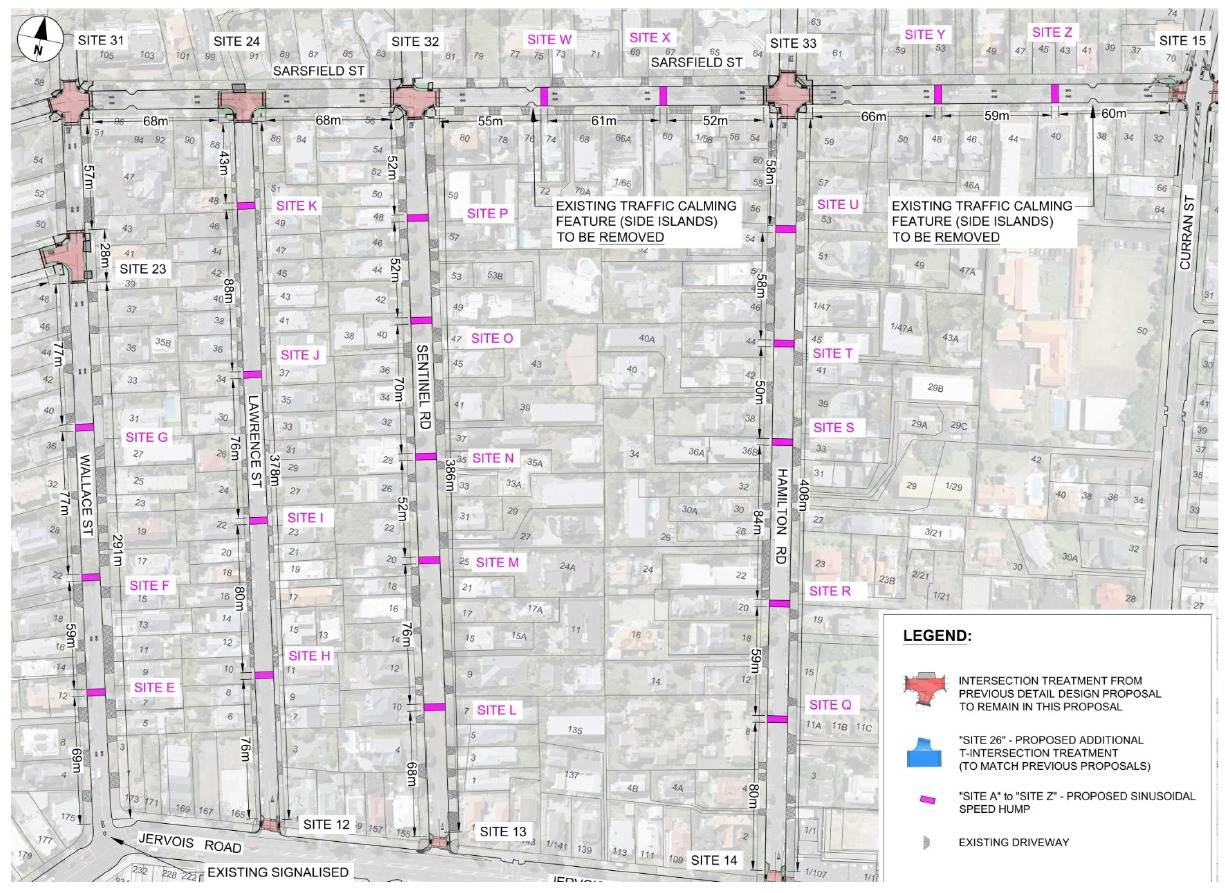Or: Herne Bay, a template for safer roads?
The 2014 Urban Cycleway Fund (UCF) really kickstarted the process of an increasingly connected-up series of safe cycling routes for Auckland. Even with many routes still not built, there’s been real growth in people making more trips by bike, reflecting what is known as the ‘network effect’.
We’ve supported the approach of building from the centre of the city outwards, because the centre of the Auckland Isthmus has the highest potential of people wanting to cycle, and this concentrated effect is needed to overcome the status quo in a way that a more incremental, spread-out process will not. But we also know that the rest of the city is crying out for good cycling.
The good news is that the UCF also allowed Auckland Transport to at least start spreading bikeways into the suburbs, developing templates for how suburbia folk would get on their bikes. In some cases, this will be achieved via arterial road bike routes; in others, like Herne Bay, this led to exploring more residential streets…
…like Clifton Road, Argyle Street, and Sarsfield Street, which provide links to an already popular cycling route along the harbour, sweeping around under the Auckland Harbour Bridge and onto the Westhaven Promenade. And of course, soon, to SkyPath!
Providing dedicated bike-lanes on residential roads can be tricky, and (as the Dutch know) isn’t strictly necessary, if safer conditions can be made right. Slowing down vehicle speeds is one of the closest things to a ‘cure-all’ to solving the problems created by cars without banning them. So with Bike AKL’s general support, AT proposed ‘traffic calming’ a whole area of Herne Bay.
Instead of bike lanes, there would be a lot of so-called ‘speed tables’, to make traffic slower and thus safer, and to deter at least some ‘rat-running’ car traffic, particularly along Sarsfield St to and from the motorway ramps.
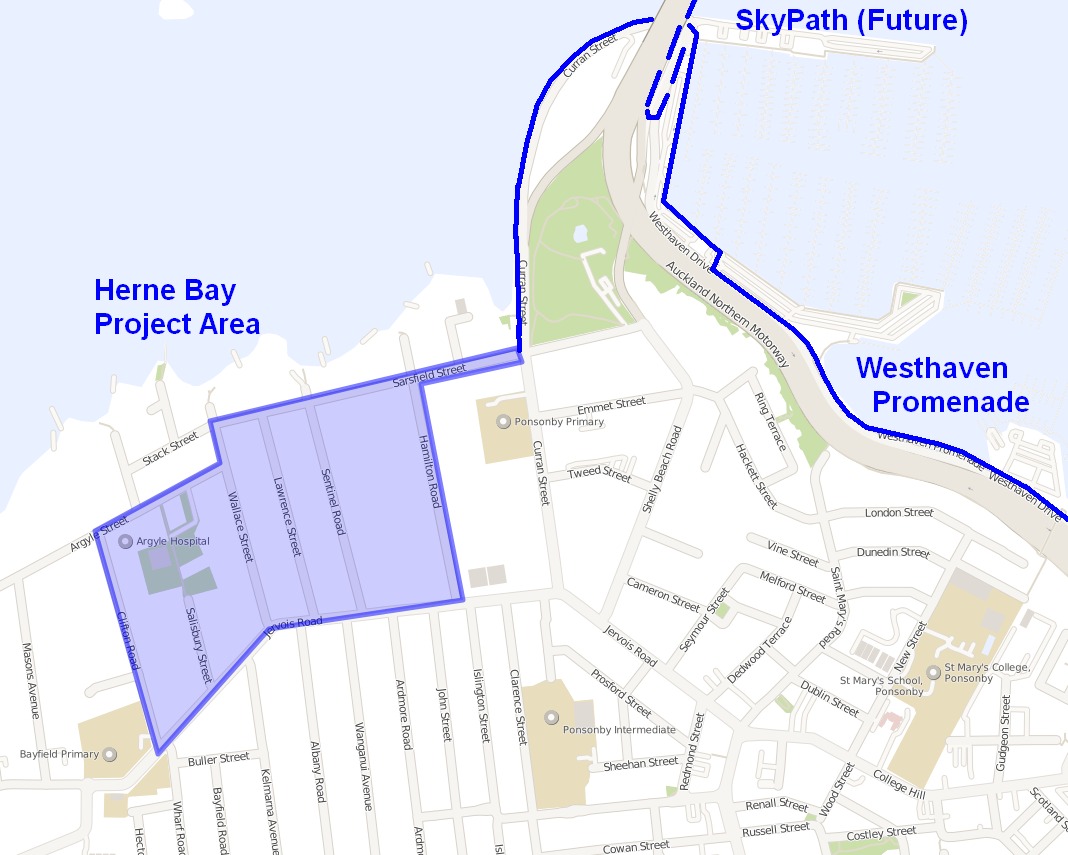
This project was consulted on in 2016, to quite favourable results (almost 70% in support). It then seemed to disappear, like so many other bike projects in Auckland – only to appear again recently, after funding issues for the delayed UCF programme were resolved as part of the ATAP agreement we wrote about here.
Speed Up to Finally Slow Down
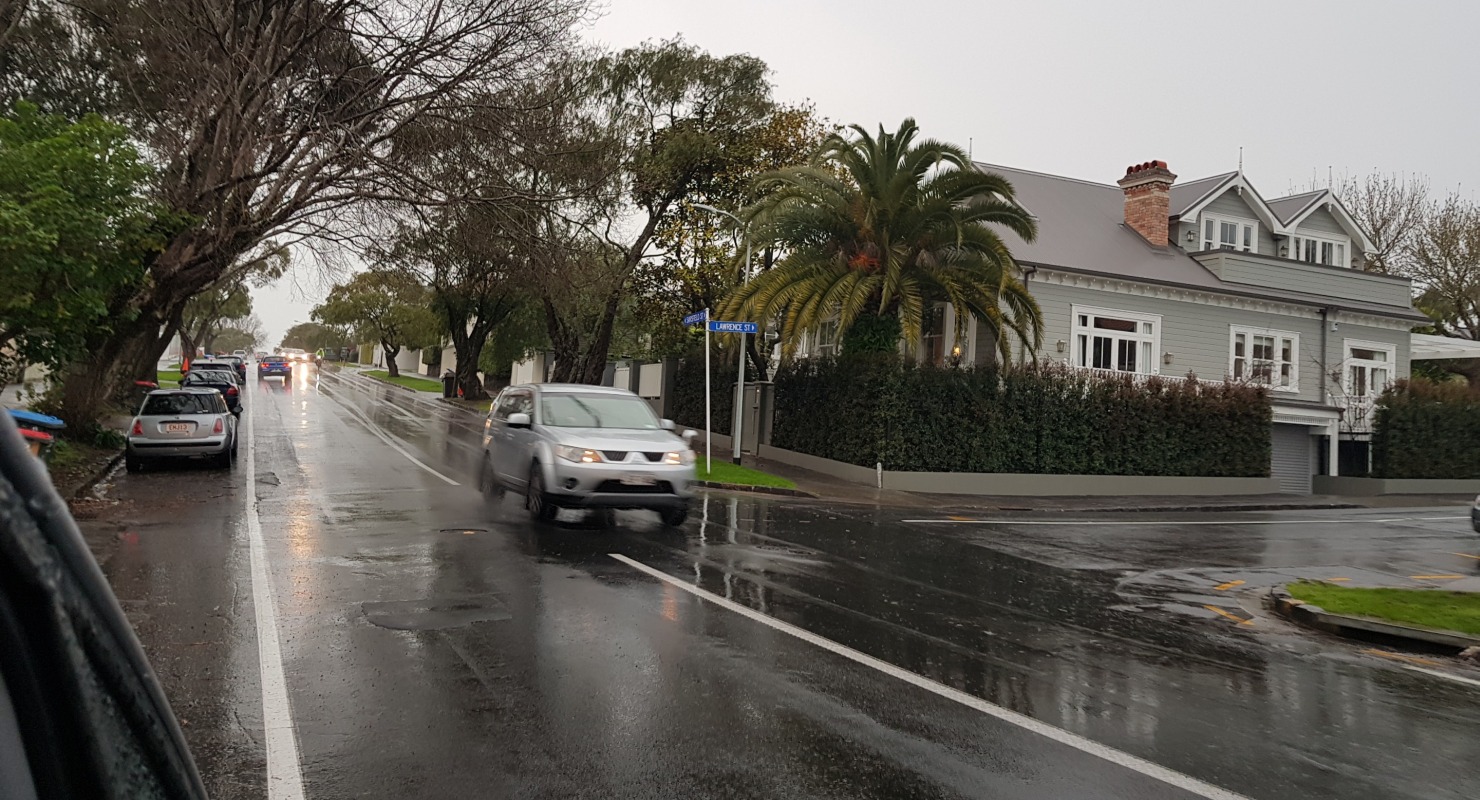
Key elements and changes include:
- To ensure speeds would come down (and there would be less ‘speeding up to slow down again’), the distances between the traffic calming elements will be reduced from the originally planned 80-120m to now 50-80m.
- For the ‘mid-block’ sections, the project now proposes to use sinusoidal speed bumps (rounded humps) instead of speed tables with flat tops (aka raised tables).
- At intersections and at the entries to the area from Jervois Road, the originally proposed raised tables will be retained, partly to make crossings easier for pedestrians.
- Proposed upgrades to Sarsfield / Curran Street will be included in the works and apparently strengthened a bit too to make crossing easier for bikes and pedestrians (this is still in final design stages).
The plans below show where the bumps will go (click to embiggen):
Some people have wondered whether the real reason AT switched away from raised tables mid-block was in order to keep a few more parking spaces.
AT notes the change was driven by multiple factors, including to ease bike movement, and to be able to fit in the extra traffic calming (raised tables are more difficult to squeeze in between driveways, as each takes up 8-10m in length).
We feel speed bumps needn’t be any less effective than raised tables – it’s all in the specific design used. However, we caution AT not to over-emphasise the ‘gentle’ aspect mentioned in their letter. If you make speed bumps too ‘gentle’, they don’t work. This will be a balancing act, as bike riders need to cross the bumps too, of course – but let’s keep those bumps effective at slowing traffic!
Compared to, say, the Dominion Road alternative cycle routes which use the older spacing rules – with bumps only every 100+ meters – the Herne Bay traffic calming will be more frequent, and thus hopefully will make the streets both less attractive as through-routes, and will slow remaining traffic down to much safer levels. (Oh, and the Herne Bay back route is also much less circuitous than those Dominion Road routes!)

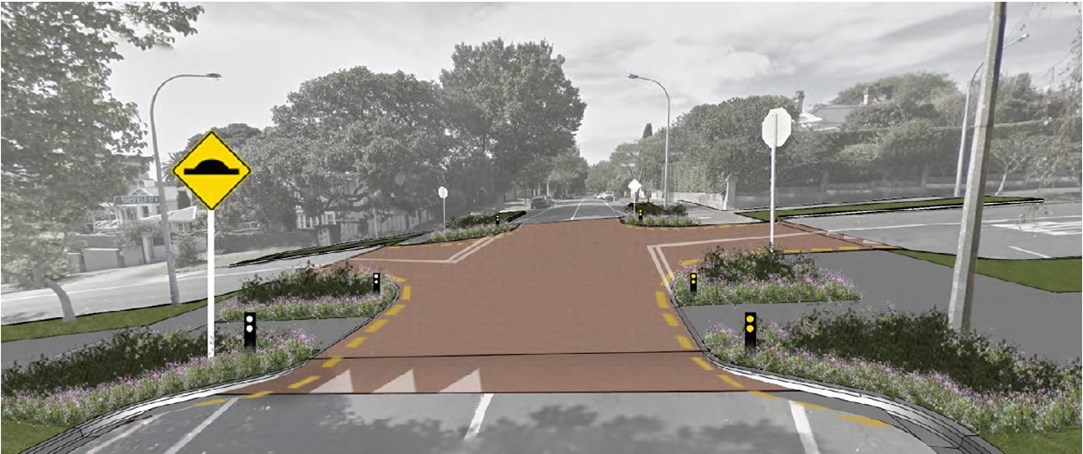
Two Things AT Could Give More Oomph
Now that AT has formally agreed that safer speeds and safer speed limits are the way to go, this area should really get a formal 30 kph speed limit. Yes, you could argue that it’s better to have speed calming without signs than signs without effective traffic calming effects (*cough* Beaumont Street, Wynyard Quarter *cough*), having both together is clearly best of all. This area should be a sitter for formal speed limiting once the new bylaw around enabling fast implementation for area-wide speed limits comes in next year. Let’s not waste that opportunity.
The other aspect that needs more ‘oomph’ is the need to reduce the volume of through-traffic, not just speed.
- A good bike street should only see 2,000 vehicles per day or less – and ideally 1,000 a day or less, as per AT’s on-road section specs in the Local Paths guideline.
- While some local streets like Sentinel Road match the 1,000 per day or less count already, Sarsfield Street currently sees approximately 3,300 vehicles per day. This should fall with the new traffic-calming, but probably won’t drop quite enough. Being able to seek an alternative to Jervois Road by zipping along this parallel route will ensure that the route retains a significant level of through-traffic, aka rat-running.
- Therefore, we’d like to see Auckland Transport add features that actively constrain through-traffic – like intersection diverters that allow local access, but not through-traffic. These may be more controversial, but they’re a key element for livable residential streets and AT has the opportunity to start trialling them in neighbourhoods. Given how much people love to live in ‘quiet cul-de-sacs’, it’s not just people on bikes who like streets with less traffic.
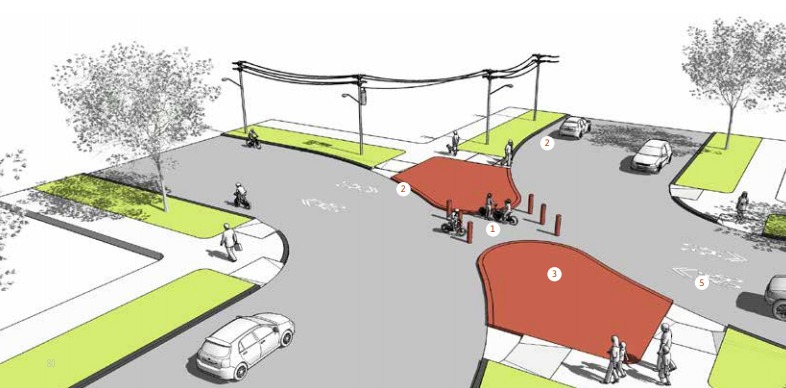
When, And What For?
With design essentially complete, except for the Sarsfield / Curran Street intersection, the intent is to start construction around March 2019 and have all the works to be complete a bit less than half a year later. Afterwards, AT will carry out surveys to check speeds achieve the targeted goals.
And what for? First of all, of course, so we don’t see any more bike crashes along here (this one on Sarsfield Street back in 2015 lingers in the mind), or so that if crashes do occur at all, they happen at speeds that are a lot less harmful.
And of course, we hope that AT will become more experienced and courageous in implementing safer-speed zones and communicating their universal benefits to every kind of person on every kind of journey. The success will only increase as safer-speed zones start to link up into more coherent areas, and as reduced speed limits and safety redesigns of our roads happen together. As drivers, we’ll get more and more used to them – to the point we’ll be aghast it was ever possible to shoot through back streets at 50kmh as a ‘short cut’! – and eventually we’ll see more and more of our town centres and suburbs return to how they should be: places where people can live, walk, and bike in their streets without undue stress and risk – and where children can even play in the street again.
